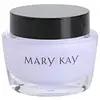What's inside
What's inside
 Key Ingredients
Key Ingredients

 Benefits
Benefits

 Concerns
Concerns

 Ingredients Side-by-side
Ingredients Side-by-side

Water
Skin ConditioningHelianthus Annuus Seed Oil
EmollientGlycerin
HumectantCetearyl Ethylhexanoate
EmollientDicaprylyl Carbonate
EmollientGlyceryl Isostearate
EmollientGlyceryl Stearate
EmollientPEG-8
HumectantStearic Acid
CleansingPEG-100 Stearate
Plumeria Alba Flower Extract
Skin ConditioningNymphaea Gigantea Flower Extract
AntioxidantSilybum Marianum Fruit Extract
Skin ConditioningMomordica Grosvenorii Fruit Extract
AntioxidantC14-22 Alcohols
Emulsion StabilisingC12-20 Alkyl Glucoside
EmulsifyingTocopherol
AntioxidantButylene Glycol
HumectantTriethanolamine
BufferingCarbomer
Emulsion StabilisingXanthan Gum
EmulsifyingPEG-4 Laurate
EmulsifyingDisodium EDTA
Sodium Benzoate
MaskingPhenoxyethanol
PreservativeIodopropynyl Butylcarbamate
PreservativeMethylparaben
PreservativeDMDM Hydantoin
PreservativeWater, Helianthus Annuus Seed Oil, Glycerin, Cetearyl Ethylhexanoate, Dicaprylyl Carbonate, Glyceryl Isostearate, Glyceryl Stearate, PEG-8, Stearic Acid, PEG-100 Stearate, Plumeria Alba Flower Extract, Nymphaea Gigantea Flower Extract, Silybum Marianum Fruit Extract, Momordica Grosvenorii Fruit Extract, C14-22 Alcohols, C12-20 Alkyl Glucoside, Tocopherol, Butylene Glycol, Triethanolamine, Carbomer, Xanthan Gum, PEG-4 Laurate, Disodium EDTA, Sodium Benzoate, Phenoxyethanol, Iodopropynyl Butylcarbamate, Methylparaben, DMDM Hydantoin
Water
Skin ConditioningDimethicone
EmollientCyclopentasiloxane
EmollientGlycerin
HumectantPropylene Glycol
HumectantCyclohexasiloxane
EmollientBetaine
HumectantCamellia Sinensis Extract
AntioxidantAlgae Extract
EmollientTocopheryl Acetate
AntioxidantSodium PCA
HumectantProline
Skin ConditioningArginine
MaskingGlycine
BufferingAlanine
MaskingLysine
Skin ConditioningGlutamic Acid
HumectantSerine
MaskingThreonine
Sorbitol
HumectantButylene Glycol
HumectantHydrogenated Polyisobutene
EmollientGlyceryl Polyacrylate
C13-14 Isoparaffin
EmollientPolyacrylamide
PEG-12
HumectantCarbomer
Emulsion StabilisingLaureth-7
EmulsifyingDisodium EDTA
Benzophenone-4
UV AbsorberTriethanolamine
BufferingPhenoxyethanol
PreservativeMethylparaben
PreservativeDMDM Hydantoin
PreservativeCI 60725
Cosmetic ColorantCI 16035
Cosmetic ColorantWater, Dimethicone, Cyclopentasiloxane, Glycerin, Propylene Glycol, Cyclohexasiloxane, Betaine, Camellia Sinensis Extract, Algae Extract, Tocopheryl Acetate, Sodium PCA, Proline, Arginine, Glycine, Alanine, Lysine, Glutamic Acid, Serine, Threonine, Sorbitol, Butylene Glycol, Hydrogenated Polyisobutene, Glyceryl Polyacrylate, C13-14 Isoparaffin, Polyacrylamide, PEG-12, Carbomer, Laureth-7, Disodium EDTA, Benzophenone-4, Triethanolamine, Phenoxyethanol, Methylparaben, DMDM Hydantoin, CI 60725, CI 16035
Ingredients Explained
These ingredients are found in both products.
Ingredients higher up in an ingredient list are typically present in a larger amount.
Butylene Glycol (or BG) is used within cosmetic products for a few different reasons:
Overall, Butylene Glycol is a safe and well-rounded ingredient that works well with other ingredients.
Though this ingredient works well with most skin types, some people with sensitive skin may experience a reaction such as allergic rashes, closed comedones, or itchiness.
Learn more about Butylene GlycolCarbomer is a polymer of acrylic acid. Its main role is to create a gel consistency.
A high amount of carbomer can cause pilling or balling up of products. Don't worry, most products contain 1% or less of carbomer.
Disodium EDTA plays a role in making products more stable by aiding other preservatives.
It is a chelating agent, meaning it neutralizes metal ions that may be found in a product.
Disodium EDTA is a salt of edetic acid and is found to be safe in cosmetic ingredients.
Learn more about Disodium EDTADMDM Hydantoin has antimicrobial and antifungal properties. It is a preservative that works by slowly releasing formaldehyde over time.
So what's formaldehyde?
DMDM Hydantoin is approved for use in cosmetics all around the world.
In the EU, this ingredient is allowed in personal products up to 0.6 percent.
You might have heard of the class-action lawsuit about it causing hair loss. According to chemists, there has not been a link found between this ingredient and hair loss.
The Hydantoin part of this ingredient is created by reacting glycolic acid and urea.
You can check out alternatives to Dmdm Hydantoin:
phenoxyethanol, potassium sorbate, and sodium benzoate.
Glycerin is already naturally found in your skin. It helps moisturize and protect your skin.
A study from 2016 found glycerin to be more effective as a humectant than AHAs and hyaluronic acid.
As a humectant, it helps the skin stay hydrated by pulling moisture to your skin. The low molecular weight of glycerin allows it to pull moisture into the deeper layers of your skin.
Hydrated skin improves your skin barrier; Your skin barrier helps protect against irritants and bacteria.
Glycerin has also been found to have antimicrobial and antiviral properties. Due to these properties, glycerin is often used in wound and burn treatments.
In cosmetics, glycerin is usually derived from plants such as soybean or palm. However, it can also be sourced from animals, such as tallow or animal fat.
This ingredient is organic, colorless, odorless, and non-toxic.
Glycerin is the name for this ingredient in American English. British English uses Glycerol/Glycerine.
Learn more about GlycerinMethylparaben is a preservative and is a paraben. It is used to prevent the growth of fungus, mold, and other harmful bacteria. Parabens are chemicals used as preservatives in both cosmetics and food.
Methylparaben can be synthetically created. It can also be found naturally in some fruits, such as blueberries.
Oftentimes, Methylparaben is combined with other parabens to help increase the shelf life.
The safety of Methylparaben is currently being studied. While ongoing studies are looking into the safety of parabens, the results have been very mixed. Some studies have not found Methylparaben to be harmful.
Learn more about MethylparabenPhenoxyethanol is a preservative that has germicide, antimicrobial, and aromatic properties. Studies show that phenoxyethanol can prevent microbial growth. By itself, it has a scent that is similar to that of a rose.
It's often used in formulations along with Caprylyl Glycol to preserve the shelf life of products.
Triethanolamine is an emulsifier and pH adjuster. It is created using ethylene oxide and ammonia. This gives Triethanolamine a nitrogen core and a similar scent to ammonia.
As an emulsifier, it prevents ingredients from separating and enhances texture by adding volume to a product.
PH adjusters are common in cosmetic products. The pH of a product can affect the effectiveness of other ingredients. A product with a high pH may also irritate the skin.
Learn more about TriethanolamineWater. It's the most common cosmetic ingredient of all. You'll usually see it at the top of ingredient lists, meaning that it makes up the largest part of the product.
So why is it so popular? Water most often acts as a solvent - this means that it helps dissolve other ingredients into the formulation.
You'll also recognize water as that liquid we all need to stay alive. If you see this, drink a glass of water. Stay hydrated!
Learn more about Water